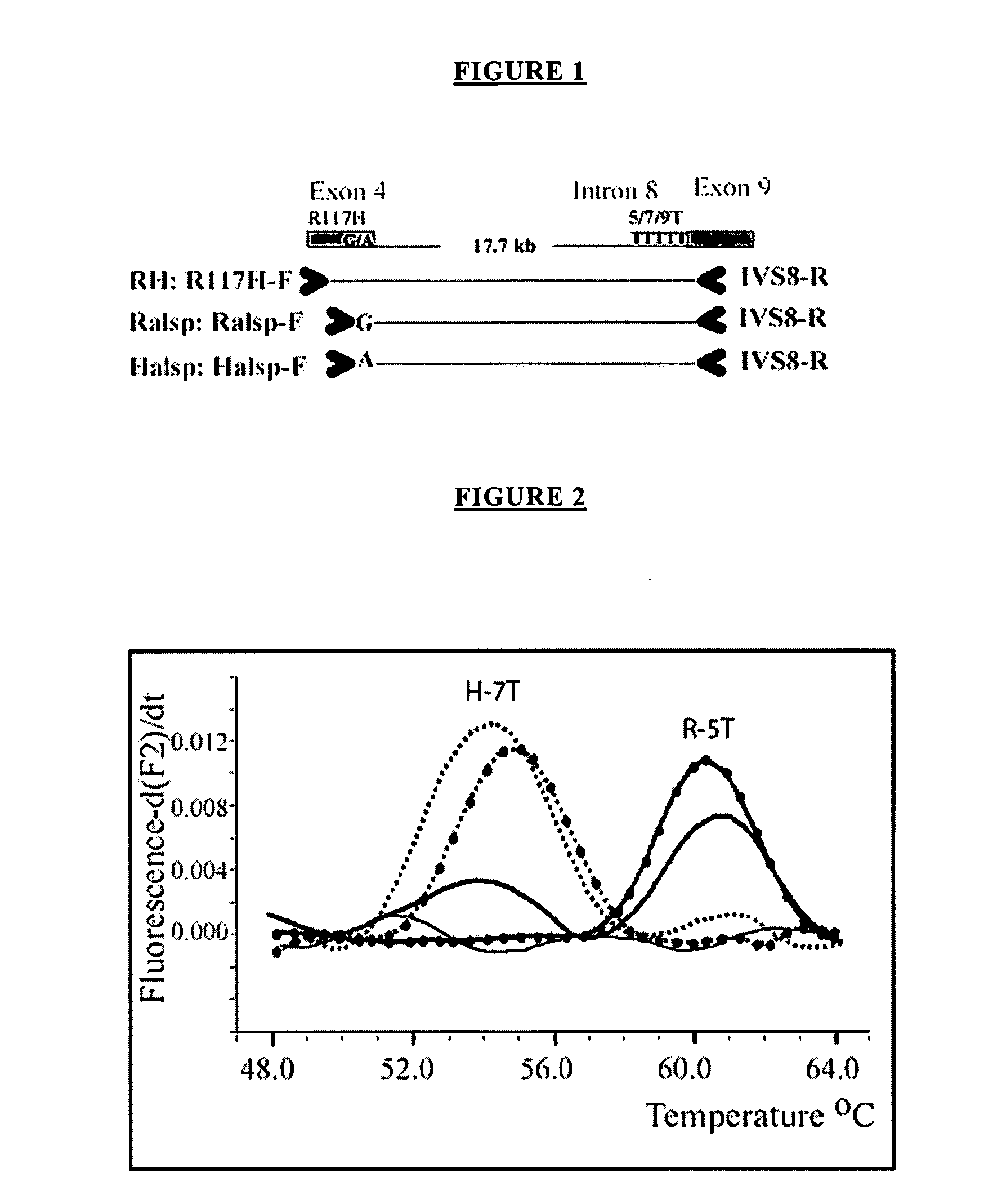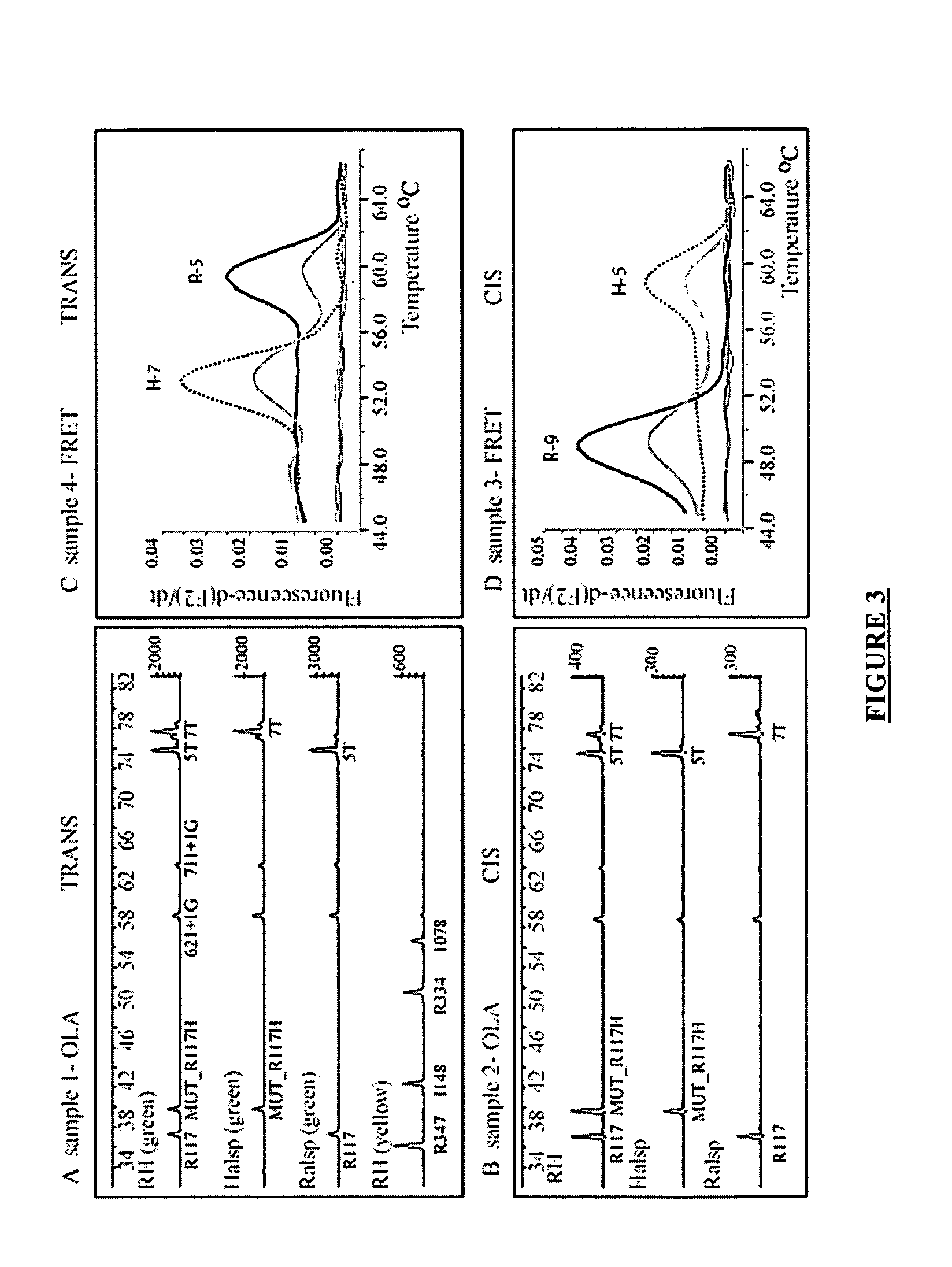Method for long range allele-specific PCR
a technology of allele-specific pcr and long-range alleles, which is applied in the field of nucleic acid chemistry, can solve the problems of increasing the risk of or causing disease, individual more or less responsive, and significantly more complex to determine the haplotype of a locus having polymorphisms at multiple genetic loci
- Summary
- Abstract
- Description
- Claims
- Application Information
AI Technical Summary
Benefits of technology
Problems solved by technology
Method used
Image
Examples
example 1
CFTR Haplotyping
[0100] The method of the present invention has been shown to be useful for direct molecular haplotyping of the R117H mutation of exon 4 and the 5T polymorphism of intron 8 of the CFTR gene. Both the R117H mutation and the IVS-8 5T variant have been found at a higher frequency in individuals affected with classic or atypical cystic fibrosis. Using the method of the present invention, rapid and accurate direct molecular haplotyping can be performed to assess individuals undergoing CF carrier screening, diagnostic confirmation of affected individuals and molecular testing of patients with atypical CF. If an individual is found to have the R117H mutation and the IVS-8 5T polymorphism, the molecular test can establish the cis / trans status of both mutations without the need to obtain DNA from parents.
[0101] The Cystic Fibrosis Transmembrane Regulator (CFTR) gene encodes a chloride channel, and mutations in this gene are responsible for classic cystic fibrosis and atypica...
PUM
| Property | Measurement | Unit |
|---|---|---|
| temperature | aaaaa | aaaaa |
| temperature | aaaaa | aaaaa |
| temperature | aaaaa | aaaaa |
Abstract
Description
Claims
Application Information
 Login to View More
Login to View More - R&D
- Intellectual Property
- Life Sciences
- Materials
- Tech Scout
- Unparalleled Data Quality
- Higher Quality Content
- 60% Fewer Hallucinations
Browse by: Latest US Patents, China's latest patents, Technical Efficacy Thesaurus, Application Domain, Technology Topic, Popular Technical Reports.
© 2025 PatSnap. All rights reserved.Legal|Privacy policy|Modern Slavery Act Transparency Statement|Sitemap|About US| Contact US: help@patsnap.com


